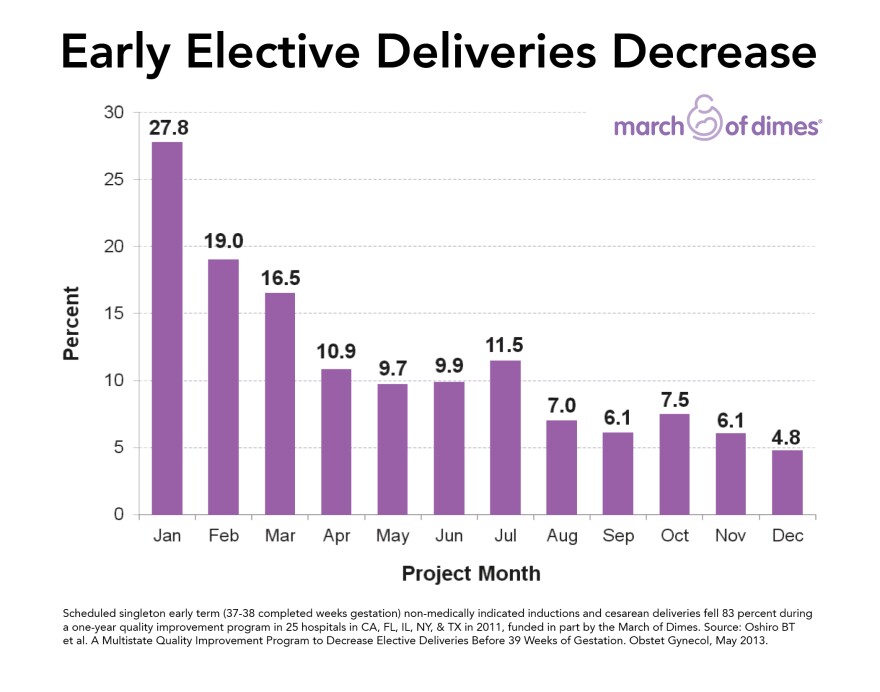A quality-improvement project carried out by hospitals in Florida and four other large states triggered a rapid and dramatic drop in early elective deliveries, according to a study published Monday.
Unless there's a reason for concern, it's best to let pregnancies progress until labor occurs naturally -- usually in the 39th, 40th or 41st week of pregnancy, past research has shown. And yet doctors, patients or both sometimes jump-start labor or opt for surgical birth in the 37th or 38th week.
Among the 25 participating hospitals in Florida and four other states, the rate of early scheduled births fell from 27.8 percent to 4.8 percent during the one-year project period, a significant 83 percent decline.
The results were published Monday online in the journal Obstetrics & Gynecology. They are especially pertinent in Florida, which has one of the highest rates of scheduled deliveries in the country, mostly by Caesarean section. See Florida Makes Dangerous Choices on Early Births.
The study looked at scheduled births in the 37th or 38th weeks of pregnancy, via C-sections or the use of drugs to induce labor. The idea was to educate doctors, patients and others involved in birth decisions to wait for delivery until at least the 39th week of pregnancy.

"This quality improvement program demonstrates that we can create a change in medical culture to prevent unneeded early deliveries and give many more babies a healthy start in life,” Dr. Bryan T. Oshiro of Loma Linda University School of Medicine, lead author of the study, said in a press release from the March of Dimes.
“Reducing unnecessary early deliveries to less than 5 percent means that more babies stayed in the womb longer, which is so important for their growth and development,” said another author, Dr. William M. Sappenfield of University of South Florida.
He said the project was aimed at changing the attitudes of doctors and patients to see that it is much healthier for babies to wait for birth until at least the 39th week of pregnancy. The data showed the drop in deliveries scheduled in weeks 37 and 38.
Florida hospitals that participated in the project were Lee Memorial Health System in Fort Myers; Santa Rosa Medical Center in Milton; South Miami Hospital; Broward Health Medical Center, Fort Lauderdale; and St. Joseph Women’s Hospital, Tampa. (For a national list, see Kaiser Health News.)
They used a toolkit called “Elimination of Non-medically Indicated (Elective) Deliveries before 39 Weeks Gestational Age” that can be downloaded free at prematurityprevention.org.
The project was carried out by a collaborative of perinatal quality improvement advocates drawn from state health departments, academic health centers, and March of Dimes chapters from the five most populous states in the country: California, Texas, New York, Florida and Illinois.
Collectively the five states account for 38 percent of the nation's births. Florida's share is 5 percent, according to the March of Dimes.
A public service ad aimed at patients is posted at YouTube at http://youtu.be/D4t0oyT3KP8.

